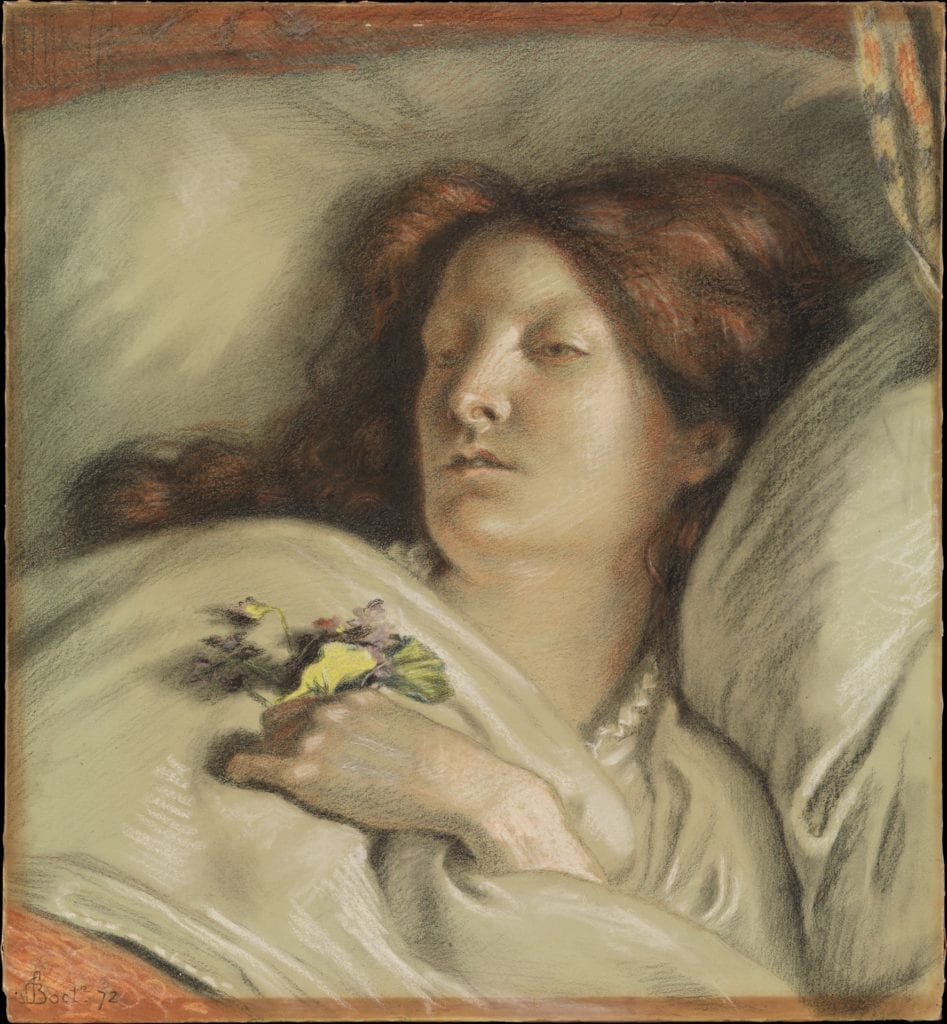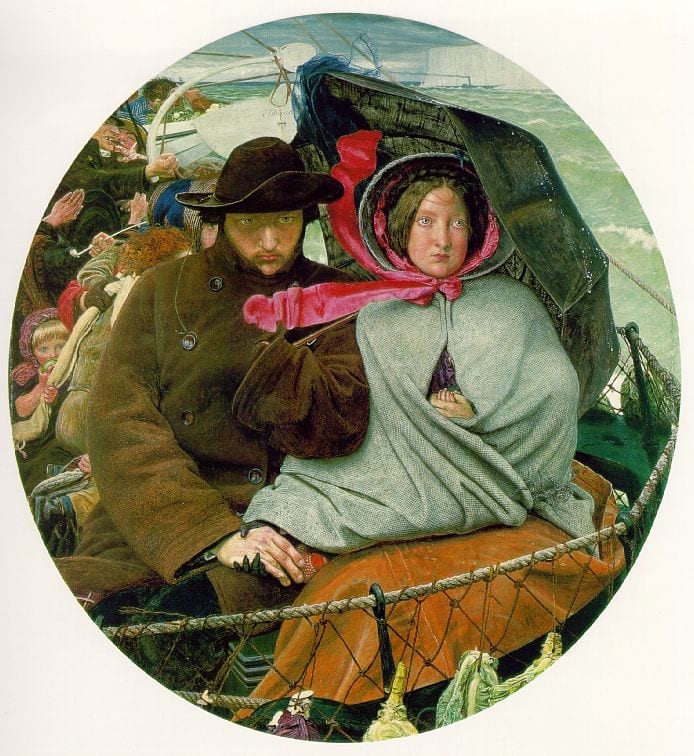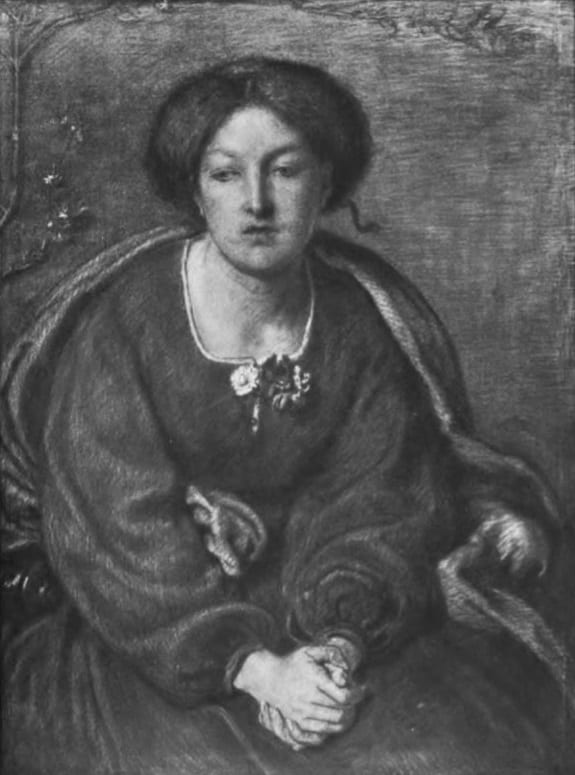Few ladies would look their best when painted in bed with their hair down while recovering from a dangerous infection. But Emma Hill looks beautiful, resting, her coiffure immaculate, sheets unruffled, a flower in her hand. In 1848 while still in her teens, she had become the model and then mistress of Ford Madox Brown, and after his first wife died from tuberculosis she became his second wife (1853). Emma was a girl of little formal education but enjoyed reading George Eliot and Tolstoy and was said to have had a sweet and gentle temperament. She served as model for Brown’s famous painting, The Last of England.
The artist himself, Ford Madox Brown (1821–1893), was born in Calais, son of a ship’s purser in the Royal Navy. The family moved to Belgium, and he studied in Bruges, Ghent, and Antwerp, settled in London in 1844, and became one of the most famous Pre-Raphaelite English painters.



The artist’s grandfather, John Brown, was born in 1735 in a village in Berwickshire, son of a day-laborer who saved all he could to give his son a better education. John developed an insatiable love for learning and by age five was said to have already read through the Gospels. As a teenager he moved to Edinburgh, where he made a living by translating from Latin the inaugural dissertations of medical students. Encouraged and influenced by one of the most distinguished physicians of the time, William Cullen, he went to medical school himself, and opened a boarding-house for medical students whom he taught and soon had a large income. At one stage Cullen promised him the vacant chair of “Theory of Medicine” but the two had a falling out when in 1780 Brown published a thesis with highly unorthodox medical views (the Brunonian system), claiming that all diseases were caused by defective or excessive stimulation, and even prescribing that one should feed rather than starve a fever. His appointment denied because of his ideas and jealousy over his popularity with students, he left Edinburgh, refused an invitation to become physician to Frederick the Great of Prussia, and went to London. There he established a successful practice and enrolled over 300 students. But in 1788 he was found dead in bed, either from a stroke or, as his detractors would have it, from an overdose of his favorite gout medicine of brandy and opium. His name was preserved on the Continent as the illustrious founder of the Brunonian system of medicine, popular especially in Germany and France, and even vigorously supported in discussions with medical men by Napoleon during his exile on St. Helena.
Image Credit
- The Convalescent (A Portrait of the Artist’s Wife). Ford Madox Brown. 1872. The Metropolitan Museum of Art.
- The Last of England. Ford Madox Brown. 1855. City Art Gallery, Birmingham, UK.
- From: The Life of Ford Madox Brown, by Ford M Hueffer, Longman, Green, and Co, 1896.
Reference
- The Life of Ford Madox Brown, by Ford M Hueffer, Longman, Green, and Co, 1896.

Leave a Reply